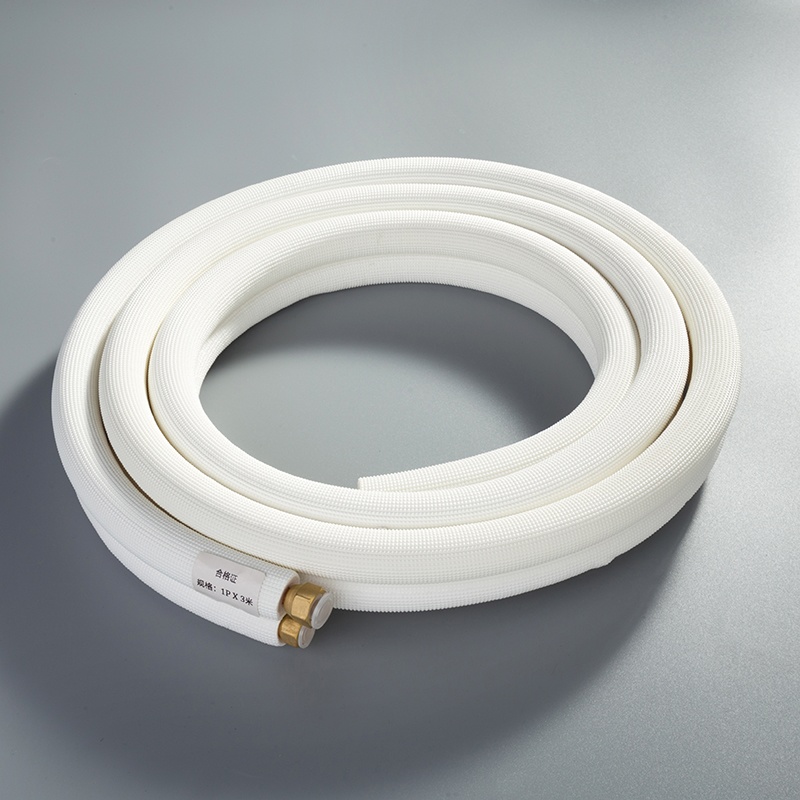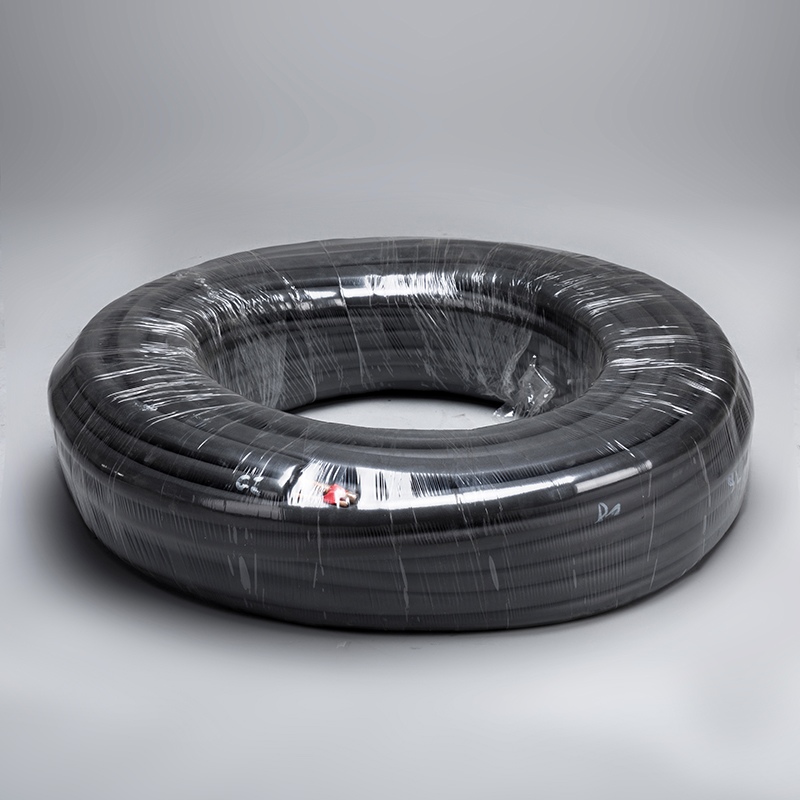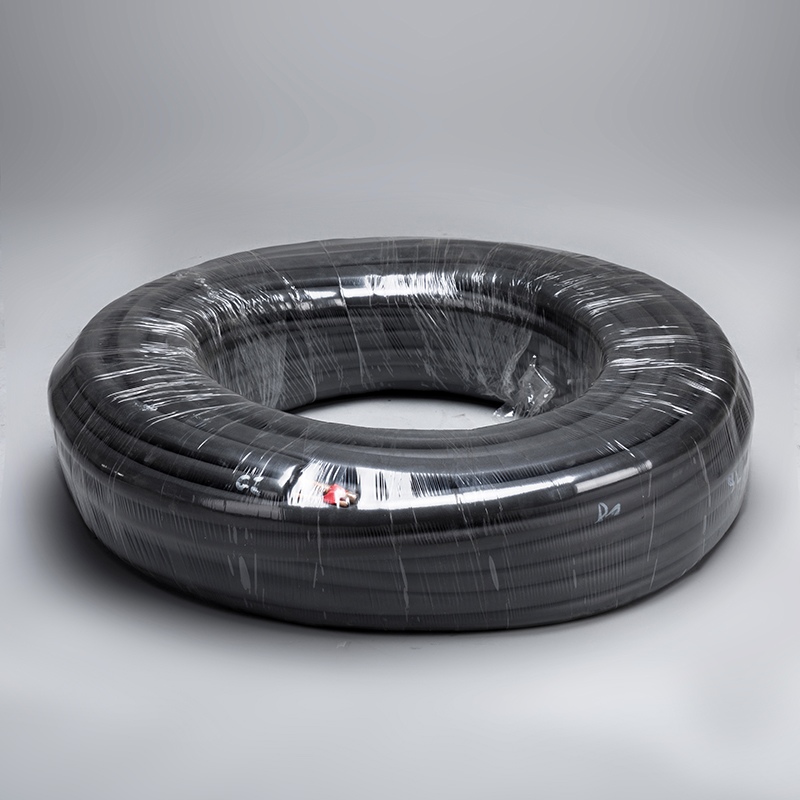5 Essential Tips for Using 1/4 Copper Pipe Fittings

When working on plumbing projects, the 1 4 copper pipe fittings play a crucial role in ensuring secure connections and leak-free installations. Understanding the significance of these fittings is essential for successful plumbing endeavors. This blog aims to provide a structured approach to using compression fittings for copper pipe, focusing on the proper techniques and tools required. By following the five tips outlined in this guide, individuals can navigate through the complexities of 5/8 in copper pipe comparisons, cutting methods, and bending copper pipe practices with confidence.
Choose the Right Type of Copper Pipe
When considering 1 4 copper pipe for plumbing projects, it is crucial to understand its characteristics and applications. The 1 4 copper pipe is known for its versatility and durability. Its small size makes it ideal for intricate installations where space is limited. Common applications include refrigeration systems, air conditioning units, and small water lines.
In contrast, the 5/8 in copper pipe offers a larger diameter, making it suitable for high-volume water distribution systems and larger HVAC units. The increased size allows for greater water flow capacity, making it a preferred choice for commercial and industrial settings.
Knowing when to use each type of copper pipe is essential for a successful plumbing project. For intricate residential projects or where space is limited, the 1 4 copper pipe is the go-to option. On the other hand, the 5/8 in copper pipe shines in scenarios requiring higher water flow rates or industrial applications.
Understanding the differences between these two types of copper pipes ensures that you choose the right one for your specific needs.
Properly Cut the Copper Pipe

Tools for Cutting
Pipe Cutters
When cutting copper pipes, pipe cutters are essential tools that provide clean and precise cuts. These specialized tools come in various sizes to accommodate different pipe diameters. By rotating the cutter around the pipe, it gradually applies pressure, resulting in a smooth and even cut. This method ensures that the pipe ends are straight, promoting a secure connection when fitting them together.
Hacksaws
For situations where a pipe cutter is not available, hacksaws can be used as an alternative tool for cutting copper pipes. When using a hacksaw, it is crucial to select a fine-toothed blade to prevent rough edges or deformities on the pipe. Careful and steady strokes should be applied while cutting to maintain accuracy and avoid unnecessary damage to the pipe's surface.
Techniques for a Clean Cut
Measuring and Marking
Before making any cuts on the copper pipe, accurate measurements must be taken to ensure precision. Using a measuring tape or ruler, mark the specific points where the cuts will be made. Double-checking these measurements helps prevent errors and guarantees that the final cut aligns with the project requirements.
Cutting Process
Once the pipe is marked accordingly, it's time to proceed with the cutting process. Whether using a pipe cutter or hacksaw, follow the marked guidelines carefully. Apply consistent pressure and maintain a steady hand throughout the cutting motion to achieve a clean and accurate cut. After completing the cut, inspect the edges for any imperfections or burrs that may affect fitting connections.
By utilizing proper tools and techniques for cutting copper pipes, individuals can ensure precise cuts that facilitate seamless installations without compromising on quality or durability.
Use Compression Fittings Correctly
Types of Compression Fittings for Copper Pipe
Compression fittings for copper pipe come in various types, each serving specific purposes. Standard Compression Fittings are commonly used in residential plumbing projects due to their versatility and ease of installation. On the other hand, Comp Fittings, short for compression fittings, offer a more compact design suitable for tight spaces or intricate piping configurations.
Installation Steps
To ensure a successful connection using compression fittings, proper installation steps must be followed diligently. Begin by Preparing the Pipe before attaching the fitting. This involves cleaning the pipe ends thoroughly to remove any debris or contaminants that could affect the seal. Once the pipe is clean, proceed with Tightening the Fitting onto the pipe. Remember to follow manufacturer guidelines for tightening torque and avoid over-tightening, which could damage the fitting or cause leaks.
By understanding the different types of compression fittings available and following precise installation steps, individuals can achieve secure and reliable connections in their plumbing systems.
Ensure Secure Connections
Checking for Leaks
Visual Inspection
To ensure leak-free connections, a visual inspection is crucial. Plumbers should carefully examine the compression fittings and surrounding areas for any signs of moisture or water droplets. Any visual cues indicating leaks should be addressed promptly to prevent potential water damage or system malfunctions. By conducting regular visual inspections, individuals can identify and resolve leaks early, maintaining the integrity of the plumbing system.
Pressure Testing
In addition to visual inspections, pressure testing is a reliable method to verify the tightness of compression fittings. Professionals can utilize pressure gauges to assess the system's ability to withstand internal pressures without leaking. By gradually increasing the pressure within the pipes, plumbers can detect any fluctuations that may indicate leaks or weak points in the connections. Pressure testing provides an extra layer of assurance that the compression fittings are securely installed and capable of withstanding operational demands.
Tightening Tips
Manufacturer's Instructions
Following manufacturer guidelines for tightening compression fittings is essential for optimal performance. Manufacturers provide specific torque recommendations to ensure proper sealing without damaging the fittings. By adhering to these instructions, individuals can achieve secure connections while prolonging the lifespan of the components. It is advisable to consult the manufacturer's documentation for precise tightening specifications tailored to each fitting type.
Avoiding Over-tightening
While ensuring a snug fit is necessary, over-tightening compression fittings can lead to detrimental consequences. Users should exercise caution and avoid applying excessive force when tightening fittings beyond the manufacturer's recommendations. Over-tightening can distort components, compromise seals, or cause irreversible damage, increasing the risk of leaks or system failures. By striking a balance between firmness and restraint during installation, individuals can prevent overtightened fittings and maintain secure connections throughout their plumbing projects.
Bending Copper Pipe Safely

When bending copper pipe, it is crucial to utilize the right tools and techniques to achieve smooth bends without compromising the pipe's integrity. Two primary tools commonly used for bending copper pipes are pipe benders and springs.
Tools for Bending Copper Pipe
Pipe Benders
Pipe benders are specialized tools designed to bend copper pipes accurately and uniformly. By using a pipe bender, individuals can create precise bends without causing kinks or deformities in the pipe. These tools come in various sizes to accommodate different pipe diameters, ensuring flexibility in bending options.
Springs
Springs offer an alternative method for bending copper pipes, especially in situations where a pipe bender may not be suitable. By inserting a spring into the copper pipe before bending, individuals can maintain the pipe's structural integrity while achieving gradual bends. Springs provide support and prevent the pipe from collapsing or crimping during the bending process.
Techniques for Smooth Bends
Heating the Pipe
Heating the copper pipe before bending can make the material more pliable and easier to work with. By applying heat evenly along the section that requires bending, individuals can reduce the risk of cracks or fractures while achieving smoother bends. It is essential to heat the pipe uniformly to avoid localized weak points that could compromise its integrity.
Gradual Bending
When bending copper pipes, it is essential to apply gradual pressure throughout the process. By slowly bending the heated section using a pipe bender or spring, individuals can control the curvature of the pipe effectively. Avoid sudden or sharp bends that could lead to creases or structural damage. Gradual bending ensures that the copper pipe maintains its strength and durability after shaping.
When working on plumbing projects, making compression fittings your best friend is key. Veteran plumbers compare compression fittings to Snap-On ties: quick, easy, and reliable in challenging situations.
Lubricating the nut thread before joining pipes or tubing is a valuable tip from experienced plumbers. It's good practice to lubricate new fittings and even old ones for reuse.
Understanding compression fittings inside out is crucial for plumbers. These indispensable tools are ideal for stationary connections to ensure watertight seals.
Remember not to overtighten compression fittings, especially with thin piping like copper. Proper tightening ensures secure connections without risking damage or leaks.
See Also
The Definitive Guide to Premium Copper Pipe Fittings
The Comprehensive Handbook for Choosing 1/4 3/8 Copper Pipe Coils
The Ultimate Manual for Purchasing 1/4 3/8 Copper Pipe Coils


